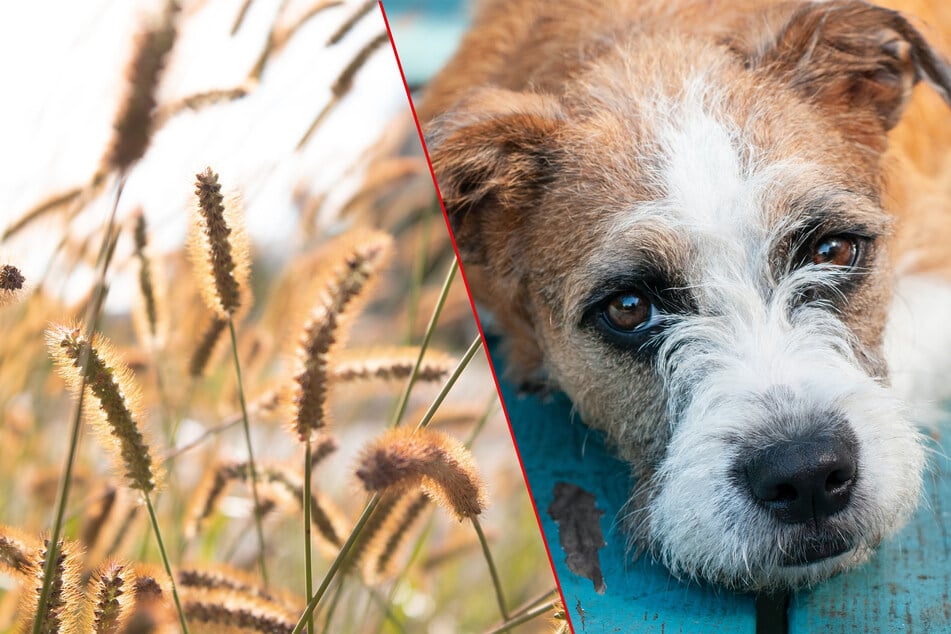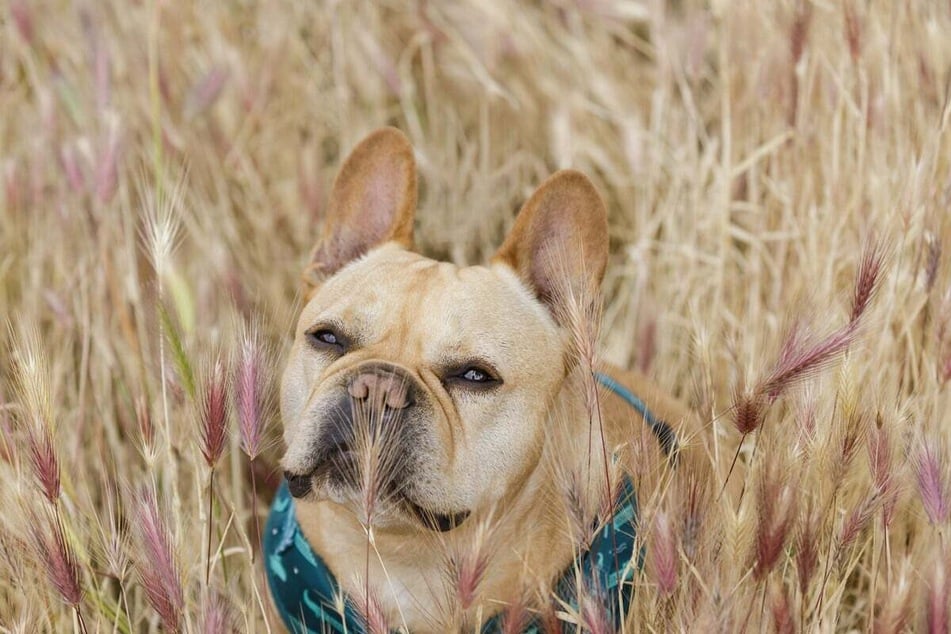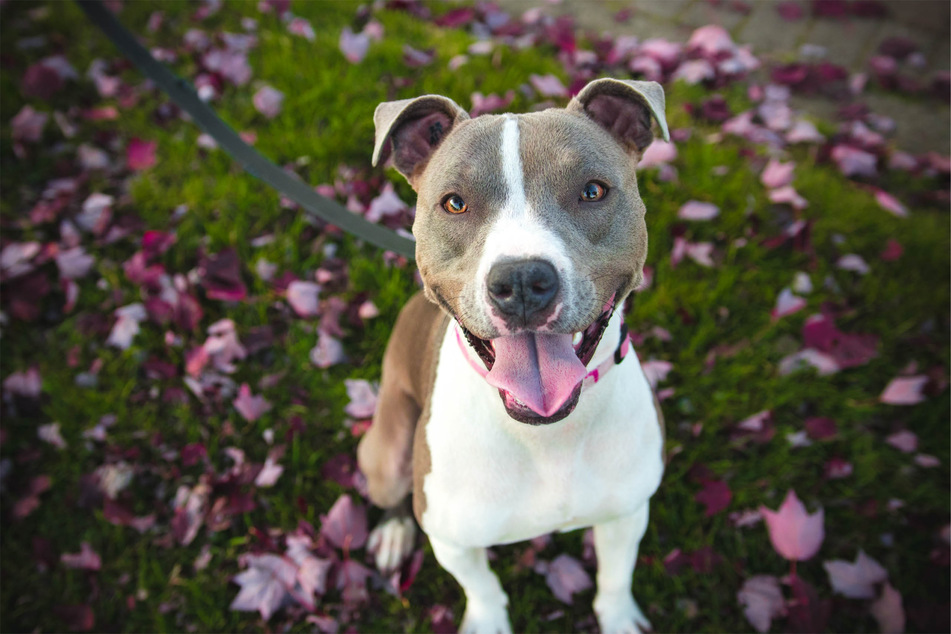Foxtails in dogs: When are they deadly, and what should you do?
Dogs love to romp through meadows and fields, smelling the daffodils and rolling in the Earth. There are hidden dangers among the grass, though, and foxtails in dogs can be deadly if left untreated.

There is nothing better than a long walk with your beloved doggo when the sun is shining and the heat is steaming. Swimming in the river, wandering through the fields, and enjoying the sweet smell of blossoming flowers ain't going to stay happy, though, if you're not aware of this hidden danger. Foxtails can kill dogs, and we all need to be careful.
In this dog guide, TAG24 will take a look at foxtails in dogs. When are they deadly, what signs and symptoms should you look out for, and what should you do if your dog ingests one?
Important: We love dogs here at TAG24, but we're not medical professionals. This page looks at some of the risks and possible solutions to foxtails in dogs but is not here to give medical advice. If you are concerned about your dog, the veterinarian should always be your first port of call.
What are foxtails or grass awns?
Foxtails are a weed that grows in the grass and resembles a wheat bulb, with small and sharp spikes that stick out from a central tube. They are incredibly bristly and hard, with barbs that can easily cut you when touched. Found all over the place, these bristles are an incredible danger to dogs who have been known to accidentally swallow them out of curiosity.
Generally growing upwards, foxtails usually stay low to the ground due to their weight bending the stalk down towards the ground. They are ticklish when brushed against and easily get the attention of dogs who want to know what these strange plants are. Foxtails are also often referred to as grass awns.
There are a number of grass and plant varieties that have awns that are, or resemble, foxtails. Here are a few examples of things you should avoid:
- Barley
- Sweet grasses
- Wheat
- Rye
Most foxtails will bloom during the spring and will gradually dry out over the course of summer. They can pierce the eye, nose, and ears of a dog and are extremely dangerous if ingested.
Foxtails in dogs
Foxtails are sadly a rarely known phenomenon, despite being incredibly common throughout our everyday lives. They are in the grass in our back gardens and along many sidewalks - it's nearly impossible to avoid them.
The problem is that dogs find them particularly fascinating. They will tickle the fur and stick to your dog's coat, clinging on like madness until something is done about it. Danger then rears its ugly head when your dog starts trying to get these thorny devils out of its fur.
So, what's the deal with foxtails in dogs? Are they dangerous, and if so, how many dogs do they kill?

Are foxtails dangerous for dogs?
Foxtails are extremely dangerous for dogs as they can be ingested, causing obstruction of airways and also severe damage to internal organs. Indeed, these tiny little plants are so dangerous that they regularly kill dogs not only in the US but across the entire world.
Owners should watch out for dogs and be especially careful during spring and summer when these spiky plants bloom and then gradually dry out in the heat. If you have them in your yard, for example, you should do your best to get rid of them and keep them under control.
Why are foxtails bad for dogs?
There are many potential dangers that stem from foxtails, some of which are more worrisome than others. It's important to understand the basic risks, as certain afflictions will be more fast-acting. In some cases, you may not have enough time to get your doggo to the vet.
Here's a quick list of the basic dangers associated with foxtails and dogs:
- Suffocation due to inhalation and blockage of the airways
- Perforated lung due to inhalation
- From inside your dog's nose or ear, tiny spikes can make their way onto your dog's brain
- Major symptoms that occasion death include increased discharge, abscesses, swelling, and extreme amounts of pain
- Blindness can occur if a foxtail gets into your dog's eye
- Limping can be caused if a foxtail is cutting into your dog's paws, this can then also get infected and cause further complications
Foxtails are deadly for dogs and require immediate emergency vet assistance if they have been consumed or inhaled. A full list of symptoms is provided below.
Important: None of the lists in this article are complete. As previously stated, we are not veterinarians and we are not doctors. With that in mind, the research we have done on this topic could have missed some important factors, risks, and symptoms. If you are ever in any doubt, please visit your veterinarian and don't rely on any information provided here.
How many dogs die from foxtails?

In light of recent doggy deaths, veterinarians issued a warning about foxtails in 2018, claiming that hundreds of dogs die from them across the US each and every year. Talking to KSL TV, veterinarian Sherri Edgar said that she sees at least two deaths per year as a result of foxtail ingestion.
The risk comes from the fact that they quickly cling to fur and, as a result, are easily eaten during grooming. Often the dogs that do survive even have to go through horrific and difficult surgery that can be fatal in itself. All-in-all, hundreds of dogs dying from foxtails every year is another good reason to stay safe and be careful.
"A lot of times, you don't even notice it until they've got a big abscess and they're in a lot of pain," Edgar claimed. She then goes on to implore anyone who goes into a foxtail-rich area to "check your dog over and make sure."
How long does it take for a foxtail to kill a dog?
There is no set amount of time that it takes for a foxtail to kill a dog, as it entirely depends on the dog, the size of the foxtail, and (sadly) chance. As a result, there are a couple of different scenarios to consider if you have seen your pup eating or interacting with a foxtail. Let's be clear, though, none of these scenarios are ideal.
Foxtails can cause suffocation and a very quick death but may also take longer to kill your dog, working their way into the body and causing all sorts of problems.
Signs and symptoms of foxtails in dogs

If your dog has swallowed a foxtail, it will quickly start gasping and yelping. The biggest risk at the beginning is suffocation, as these grains will quickly and easily obstruct your dog's airways.
One of the biggest problems, though, is that it can be unclear what is going on. As a result, it's important to recognize the symptoms of foxtail ingestion.
Here are the most common signs of foxtails in a dog:
- Rubbing of the nose
- Suddenly sticking paws into the nose/ears/eyes
- Head rubbing against the ground
- Nibbling at the paws
- Rattling and shaking
- Heavy breathing
- Constant sneezing
- Runny nose
- Watering eyes
- Constant shaking of the head
- Limping
- Whining, panting, barking, restlessness
- A sense of panic and fear
- Barking
Dogs who have consumed a foxtail and are suffocating need to be helped immediately. Ultimately, if your dog has eaten a foxtail, it should be taken straight to the vet no matter what.
What to do when your dog is attacked by foxtails
If you ever see that your dog has eaten or is eating a foxtail, action must be immediately taken. When your dog is still in the process of consuming the plant, you need to stop it straight away and then try to remove the foxtail if possible (see below). Considering the danger that such an action can present, it's best to get your dog to the veterinarian.
There's no time to monitor for symptoms, though. If your dog has eaten a foxtail and isn't suffocating, you should first thank your lucky stars and then get it medically treated. These seemingly innocuous plants can tear through your dog's internal organs and cause extreme and possibly fatal damage.
At the risk of sounding like a broken record: If your dog eats a foxtail, go to the vet immediately - without delay!
How to remove foxtails from dogs
If you catch your dog eating a foxtail, it's time to spring into action. The first thing you should do is try and get the thing out of your dog's mouth. This can be dangerous as it could result in an accidental bite but is vitally important. There's no good way to explain how to do it: Get someone to hold your dog's mouth open and use your fingers to pull it out.
One of the biggest dangers is that a foxtail will get stuck on your dog's fur and then eaten when your dog tries to remove it. As a result, if it is stuck to your dog's coat, then you should remove it straight away - even if that means cutting off some of its hair with a pair of scissors.
Go to the vet if it has got into your dog's eyes, nose, or ear to avoid potential blindness, the risk that its bristles will be breathed in, and damage to your dog's hearing. This should be an immediate move as only a professional will have the equipment to deal with it, and, again, if your dog accidentally ingests the thing, then it can quickly become fatal.
Foxtails are a serious danger, and you should act cautiously when they are around. Keep your dog close, get rid of any that gets on its coat, and try to steer clear of those foxtail-dense areas when walking.

How to avoid foxtails in dogs
The saying goes that the best measure is a preventative measure. We can talk about how to treat a dog that has come into contact with foxtails all day, but if we can stop it from happening in the first place, then that's the ultimate treatment. A word of warning, though: It's not as easy as you'd think.
So how can you avoid foxtails in dogs?
- Dogs with floppy and bent ears should be examined after every walk
- Your doggo's fur should be examined as well, just in case
- Avoid walks in areas that are known to have lots of foxtails
- Stay out of cornfields in the summer
- Avoid the edge of meadows, or at least try to keep your distance
- Bathe your dog after a walk and brush it
- Keep your dog on a leash
You can find foxtails, or foxtail-like plants, all over the place. Indeed, it's highly likely that you have them in your yard. As a result, it's best to always be aware of the risks but also to understand that you can't mitigate every potential harm. Instead, try to stay calm and pay attention to your surroundings.
If you see foxtails, keep your dog away from them. If you know there will be foxtails somewhere, don't take your dog. If there is any way that you can reduce the risk, put your "doing" shoes on and tie up those laces!
Foxtails are dangerous and a huge doggy risk
If you find that foxtails have become a problem with your dog, and your dog has begun displaying symptoms of being attacked by them, then your vet should be immediately contacted. Foxtails are no laughing matter and present a huge threat to your dogs' health. In extreme cases (that are not so rare), these little plants can actually kill your darling doggo - so immediate action is a must!
Try not to panic, though; there are plenty of things that your veterinarian can do to help your dog if it's in trouble. Stay calm, get to the vet as soon as humanly possible, and your dog should survive its foxtail adventure - good luck!
Cover photo: Collage: Unsplash/Joshua Ralph/Erda Estremera



